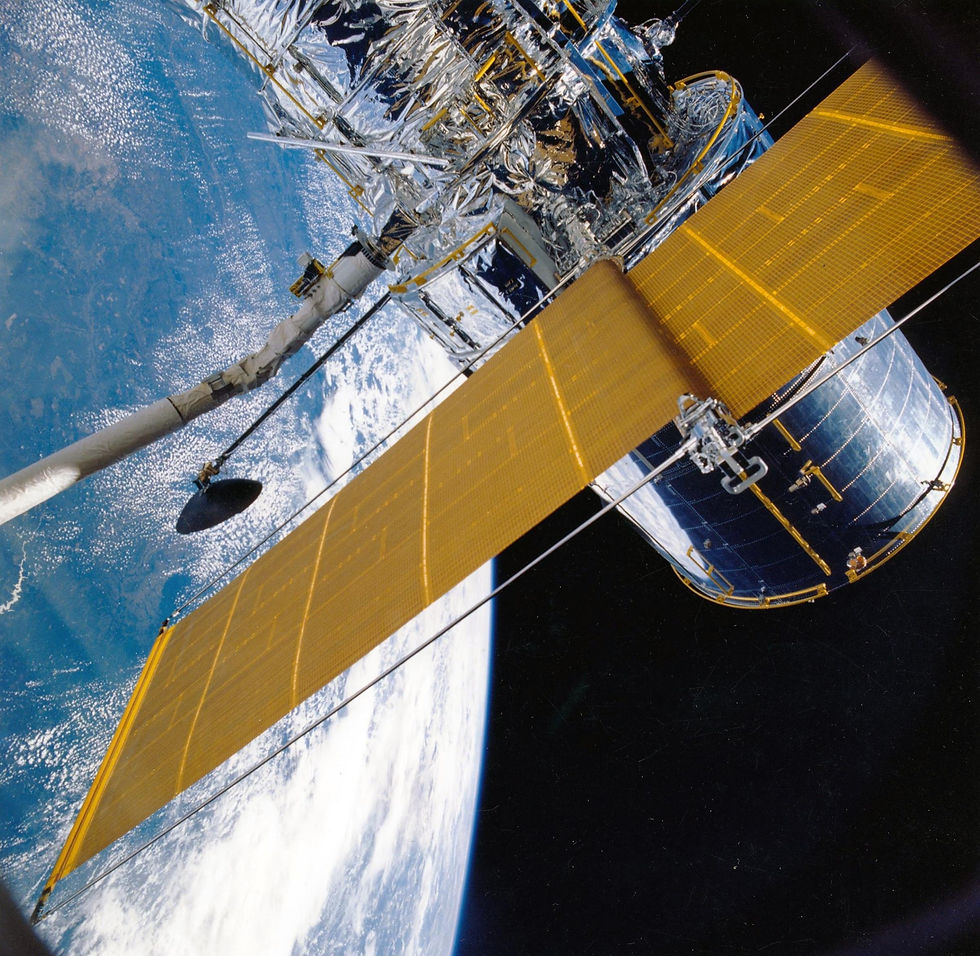2 min read
What is a Satellite? Orbit and its types.
- Punish Rathore

- Jun 29, 2022
- 4 min read
Updated: Aug 9, 2022
A satellite is an object that is intentionally placed into orbit. These objects are called artificial satellites to distinguish them from natural satellites such as the earth's Moon. On 4 October 1957, the Soviet Union launched the world's first artificial satellite "Sputnik1" Since then, about 8,900 satellites from more than 40 countries have been launched.

What is an orbit?
An orbit is a curved path that an object in space (such as a star, planet, moon, asteroid, or spacecraft) takes around another object due to gravity.
Gravity causes objects in space that have mass to be attracted to other nearby objects. If this attraction brings them together with enough momentum, they can sometimes begin to orbit each other.
According to a 2018 estimate, about 5000 remained in orbit, of those, about 19,00 were operational while the rest had exceeded their useful life and become space debris.
Approximately 63% of the operational satellite are in low earth orbit (at 2000 km) 6% are in medium earth orbit (at 20,000 km) 29% are in geostationary orbit (at 36,000 km) and the remaining 2% are in various elliptical orbits.
The country with the most satellites is the united states has the most with 2,944 satellites. china is second with 499, and Russia third with 169.
India has a total of 53 operational satellites in space, providing various identified services to the nation. A total of 21 of these are communication satellites, eight are navigation satellites, 21 are Earth observation satellites and three are science satellites.

Types of Orbit
Geostationary orbit (GEO)
Satellites in geostationary orbit (GEO) circle Earth above the equator from west to east following Earth’s rotation – taking 23 hours 56 minutes and 4 seconds – by traveling at the same rate as Earth. This makes satellites in GEO appear to be ‘stationary’ over a fixed position. To perfectly match Earth’s rotation, the speed of GEO satellites should be about 3 km per second at an altitude of 35 786 km. This is much farther from Earth’s surface compared to many satellites.
GEO is used by satellites that need to stay constantly above one particular place over Earth, such as telecommunication satellites. This way, an antenna on Earth can be fixed to always stay pointed towards that satellite without moving. It can also be used by weather monitoring satellites because they can continually observe specific areas to see how weather trends emerge there.
Low earth orbit
A low Earth orbit is an orbit around Earth with a period of 128 minutes or less and an eccentricity less than 0.25. Most of the artificial objects in outer space are in LEO, with an altitude never more than about one-third of the radius of Earth.
Medium Earth orbit (MEO)
Medium Earth orbit comprises a wide range of orbits anywhere between LEO and GEO. It is similar to LEO in that it also does not need to take specific paths around Earth, and it is used by a variety of satellites with many different applications.
It is very commonly used by navigation satellites, like the European Galileo system (pictured). Galileo powers navigation communications across Europe and is used for many types of navigation, from tracking large jumbo jets to getting directions to your smartphone. Galileo uses a constellation of multiple satellites to provide coverage across large parts of the world all at once.
Polar orbit and Sun-synchronous orbit (SSO)
Satellites in polar orbits usually travel past Earth from north to south rather than from west to east, passing roughly over Earth's poles.
Satellites in a polar orbit do not have to pass the North and South Pole precisely; even a deviation within 20 to 30 degrees is still classed as a polar orbit. Polar orbits are a type of low Earth orbit, as they are at low altitudes between 200 to 1000 km.
Sun-synchronous orbit (SSO) is a particular kind of polar orbit. Satellites in SSO, traveling over the polar regions, are synchronous with the Sun. This means they are synchronized to always be in the same ‘fixed’ position relative to the Sun. This means that the satellite always visits the same spot at the same local time – for example, passing the city of Paris every day at noon exactly.
Transfer orbits and geostationary transfer orbit (GTO)
Transfer orbits are a special kind of orbit used to get from one orbit to another. When satellites are launched from Earth and carried to space with launch vehicles such as Ariane 5, the satellites are not always placed directly in their final orbit. Often, the satellites are instead placed on a transfer orbit: an orbit where, by using relatively little energy from built-in motors, the satellite or spacecraft can move from one orbit to another.
This allows a satellite to reach, for example, a high-altitude orbit like GEO without actually needing the launch vehicle to go all the way to this altitude, which would require more effort – this is like taking a shortcut. Reaching GEO in this way is an example of one of the most common transfer orbits, called the geostationary transfer orbit (GTO).
Lagrange points
For many spacecraft being put in orbit, being too close to Earth can be disruptive to their mission – even at more distant orbits such as GEO.
For example, for space-based observatories and telescopes whose mission is to photograph deep, dark space, being next to Earth is hugely detrimental because Earth naturally emits visible light and infrared radiation that will prevent the telescope from detecting any faint lights like distant galaxies. Photographing dark space with a telescope next to our glowing Earth would be as hopeless as trying to take pictures of stars from Earth in broad daylight.



댓글